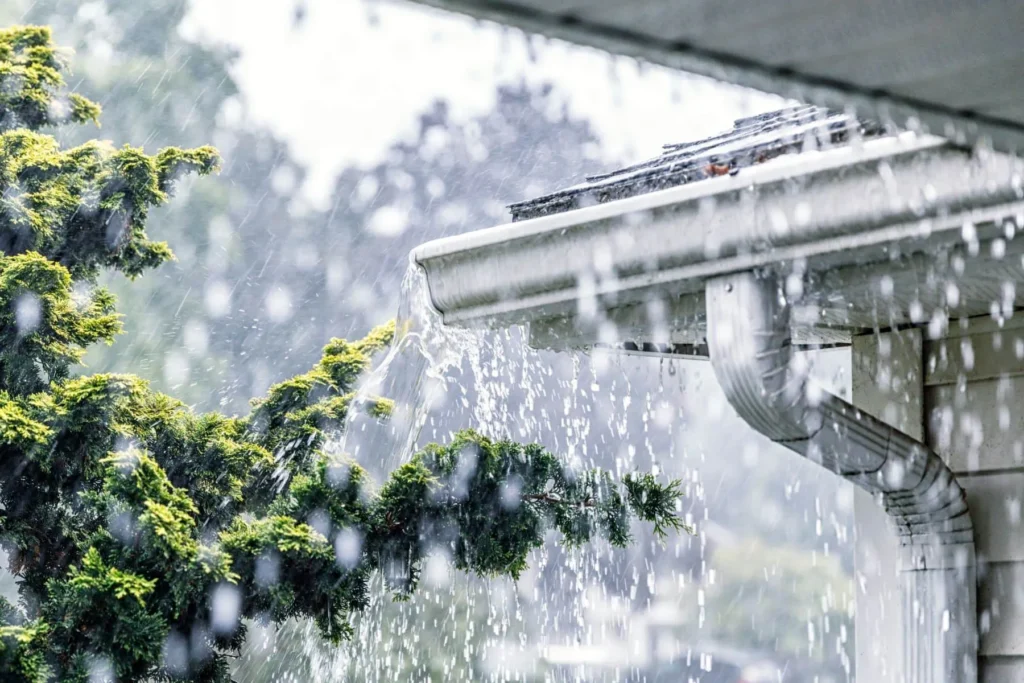The rainy season can be a beautiful time of year, but it also brings the potential for flooding, water damage, and drainage issues. To safeguard your home and property, it’s crucial to prepare your drainage system before the rainy season arrives. In this comprehensive guide, we will explore the steps and strategies to ensure your drainage system is ready to handle the increased water flow, keeping your home and surroundings dry and secure.

1. Clear and Maintain Gutters and Downspouts
Gutters and downspouts play a vital role in directing rainwater away from your home’s foundation. However, they can become clogged with leaves, debris, and dirt over time. To prepare for the rainy season, follow these steps:
Inspect your gutters and downspouts for blockages and damage.
Clean gutters thoroughly, removing all debris and flushing them with water.
Repair or replace damaged gutters and downspouts as needed.
Consider installing gutter guards to prevent future clogs.
2. Check Your Drainage Paths
Examine the paths along which water should flow away from your home. Ensure that these routes are free from obstructions and in good condition. Pay attention to the following:
Check for debris or blockages in outdoor drains, ditches, and culverts.
Inspect your landscape for any signs of soil erosion or depressions that may hinder water flow.
Ensure that the ground is properly sloped away from your foundation to prevent water from pooling near your home.
3. Maintain Your Sump Pump
If you have a sump pump in your basement or crawl space, it’s crucial to ensure that it’s in proper working condition before the rainy season. Perform the following tasks:
Test the sump pump by pouring water into the pit and checking that it activates and discharges water as expected.
Clean the sump pit to remove any debris that might obstruct the pump’s operation.
Consider installing a battery backup for your sump pump to ensure it functions during power outages.
4. Inspect and Maintain French Drains
French drains are designed to redirect water away from your home’s foundation. Inspect and maintain your French drain system as follows:
Check the drain’s entrance and exit points for debris or obstructions.
Ensure that the drain’s pipe is free from clogs and in good condition.
Clean the drain’s entrance, ensuring it’s not covered with soil or mulch.
5. Check Basement and Crawl Space Waterproofing
Basements and crawl spaces are susceptible to water intrusion during the rainy season. Ensure your waterproofing measures are in good condition:
Inspect the condition of your basement or crawl space walls for signs of moisture, cracks, or leaks.
Verify that your interior and exterior waterproofing systems are working effectively.
Address any issues promptly to prevent water from entering your living spaces.
6. Clean Window Wells and Covers
Window wells around basement windows can accumulate leaves and debris, potentially leading to water seepage. Prepare your window wells by:
Cleaning out any leaves, dirt, or debris from the window wells.
Installing window well covers to prevent debris and water from entering.
7. Assess the Condition of Your Driveway and Patio
Driveways and patios should be properly sloped to prevent water from pooling. Inspect these surfaces and address any issues:
Check for cracks or depressions that may hinder water flow.
Ensure that the slope directs water away from your home’s foundation.
8. Install Downspout Extensions
To further protect your home, consider installing downspout extensions that direct water several feet away from your foundation. This prevents water from accumulating near your home and potentially causing damage.
9. Consider Rain Barrels or a Rain Garden
For those interested in sustainable solutions, rain barrels can be installed to collect rainwater for future use. Additionally, you can create a rain garden, a planted area designed to absorb excess rainwater, which can help alleviate drainage issues.
10. Consult a Professional
If you’re unsure about the condition of your drainage system or if it requires significant improvements, it’s wise to consult a professional. A professional plumber or drainage expert can assess your system and recommend the necessary steps to prepare for the rainy season.
11. Emergency Plan and Flood Insurance
In areas prone to flooding, it’s important to have an emergency plan in place. This includes understanding evacuation routes, having an emergency kit ready, and considering flood insurance to protect your property.
12. Stay Informed
Lastly, staying informed about weather forecasts and flood warnings is essential. You can sign up for weather alerts and monitor local news to keep track of changing weather patterns and potential flood risks.
Conclusion
Preparing your drainage system for the rainy season is a proactive step in safeguarding your home and property. By following these steps and maintaining your drainage infrastructure, you can prevent water damage, flooding, and costly repairs. Ensuring that your gutters, downspouts, and other drainage components are in optimal condition will help you weather the rainy season with confidence and peace of mind. Remember that professional guidance and maintenance can be invaluable in ensuring the effectiveness of your drainage system.

